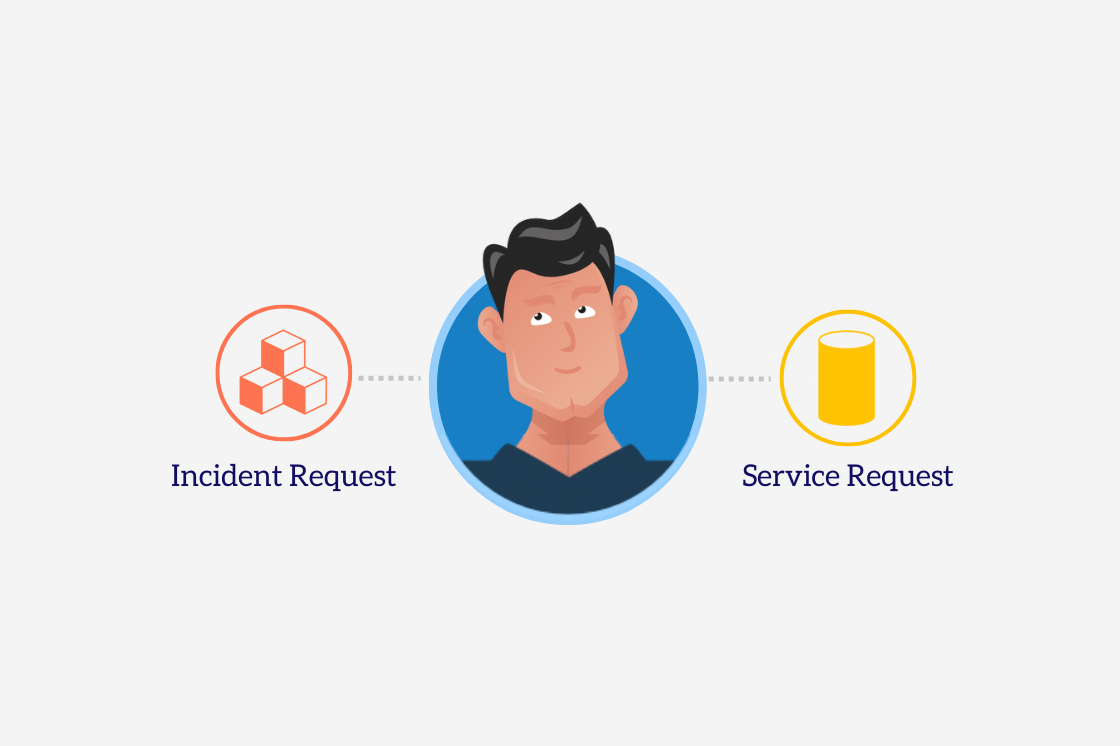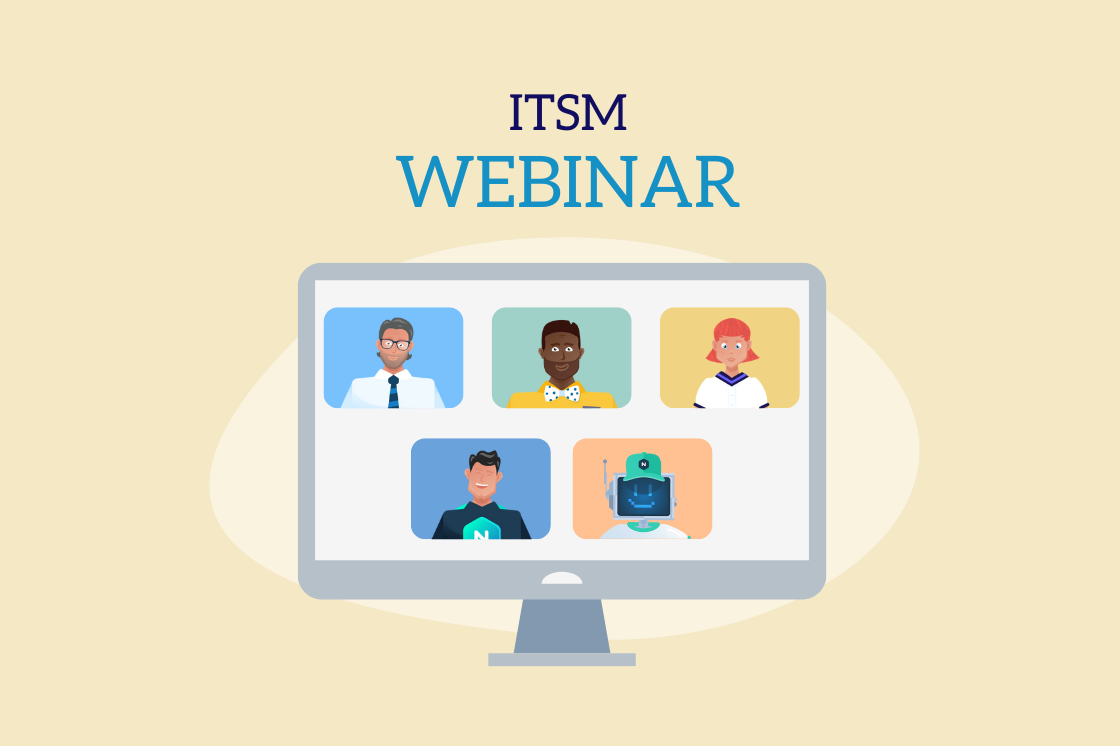What Are ITSM Tools? The Answer May Surprise You.
When you think about IT Service Management tools, companies like ServiceNow, BMC, and Atlassian typically come to mind. But what if I told you that many other tools and techniques can significantly improve your ITSM program?
In this post, I will discuss your traditional IT service management tools and why they are critical to today's IT organization. I will then look at other tools and techniques required for ITSM success.
ITSM Tools vs Service Management Programs
I want to get one thing off my chest—too many people equate IT Service Management tools with an ITSM program. These organizations claim to have an IT Service Management Program or a Service Management Office, but they are often only focused on implementing and maintaining the IT Service Management tools.
IT Service Management is a holistic approach to strategizing, designing, building, operating, and improving customer services.
An ITSM program extends beyond "ticketing systems" to encompass all software services supporting a business's operating model and facilitating digital transformation.
Effective ITSM programs require fostering a culture of collaboration and continuous improvement, engaging employees in the process, and ensuring that cross-departmental communication aligns IT services with business objectives.
Moreover, understanding how ITSM directly impacts business outcomes is crucial. A well-managed ITSM program can improve customer satisfaction, enhance operational efficiency, improve security and risk management, and positively impact the organization's bottom line.
With that in mind, read about traditional IT Service Management tools or skip ahead for information on tools to support your ITSM program.
What are IT Service Management Tools?
Most people define IT Service Management tools as software applications that help organizations manage and deliver their IT services.
These tools support ITSM processes such as incident management, problem management, change management, service request management, and configuration management (check out our article on the five key ITSM processes).
In most cases, these IT Service Management tools, especially when part of a single platform, help streamline and automate the workflows associated with each process, such as tracking a request from submission through to approval and fulfillment helping to reduce the potential for human error.
ITSM tools are essential, as the sheer volume of transactions makes it necessary to have automation in place. When implemented correctly, ITSM solutions offer numerous benefits:
- Improved Efficiency: ITSM tools can automate routine tasks and processes, allowing IT teams to focus on strategic initiatives.
- Enhanced User Satisfaction: ITSM tools streamline service delivery, resulting in faster response times and improved user experiences.
- Better Visibility: ITSM tools provide insights into service performance and resource allocation, enabling management to make data-driven decisions.
- Alignment with Business Goals: ITSM tools ensure that IT services support organizational objectives and adapt to changing business needs.
Choosing the Right IT Service Management Tool
Choosing the right ITSM tool for your organization starts with a structured approach to understanding your requirements. According to Gartner, many organizations are overspending on ITSM tools to the tune of $2 billion by spending on features they will never use.
Here are some things to consider when choosing an IT Service Management tool:
- Business Requirements: Identify specific necessary features while avoiding "nice to have" options that may limit viable choices.
- Cloud Based vs. On-Premises: Decide between a flexible cloud-based solution or a more controlled on-premises option based on organizational needs.
- Integration Capabilities: Assess how well the IT Service Management tool integrates with existing systems, monitoring tools, and enterprise applications. Check for robust APIs that facilitate integration.
- Customization and Configuration: Choose IT Service Management tools that you can easily customize to fit specific without extensive coding.
- Reporting and Analytics: Look for built-in reporting capabilities that provide performance insights and the ability to create custom reports for specific needs.
- Compliance and Security: Ensure the IT Service Management tools adheres to relevant security standards and complies with applicable regulations (e.g., GDPR, HIPAA).
- Cost and Budget: Consider initial licensing fees, ongoing maintenance, support costs, and whether dedicated development staff is needed.
- Vendor Support Reputation: Evaluate vendor reputation, support quality, availability, and training resources. Look for tools with a supportive community for knowledge sharing and improvement.
- Robust Roadmap for Future Development: Look for IT Service Management tools with a clear roadmap for enhancements. Tools integrating artificial Intelligence can provide advanced features such as automated incident resolution, predictive analytics, and improved user experience, aligning with evolving business needs.
IT Service Management Tool Implementation
A significant number of ITSM tool implementations fail for various reasons.
Common issues include the pressure to adopt out-of-the-box solutions that may not meet specific requirements, leading to inadequate results.
Additionally, the "Lift & Shift" approach often leaves organizations configuring the new tool to mirror the old one without making meaningful improvements.
Time pressure can also create challenges, resulting in scope creep that causes cost overruns and missed deadlines.
Poorly defined requirements frequently lead to a subpar user experience, while the absence of clear process definitions can result in ineffective automated workflows.
We recommend five key steps to improve the likelihood of success in IT Service Management tools implementation.
- First, identify gaps in your existing tool, as this will help build a roadmap for necessary improvements.
- Collaborate with stakeholders to gain insights into their requirements and needs.
- Clearly define your processes, which will guide your automation workflows.
- Capture user stories and specific requirements to assist developers and implementors during the implementation phase.
- Finally, drive sustainability for the tool through comprehensive training, establishing controls, reporting metrics, and implementing governance structures.
For further insights, check out our webinar on ITSM Tool Implementation - Practical Advice for a Successful Project.
Essential Tools for your Service Management Program
Now that we've looked at traditional IT Service Management tools let's go beyond them and look at some of the tools and techniques necessary for the success of an ITSM program.
The Business Case for ITSM
One of the most essential tools is the business case for ITSM best practices. Without it, it isn't easy to garner support and funding for your ITSM program.
Check out this detailed article on building "The Business Case for ITSM Best Practices".
Business Process Management
Business Process Management (BPM) is an approach to identifying, managing, and improving an organization's processes. It provides a systematic framework that acknowledges the interdependencies of processes, viewing them as components of a value stream.
Key steps in BPM include:
- Identifying and categorizing processes
- Process mapping
- Business process automation
- Process execution
- Process governance
- Continuous process improvement
BPM promotes a cross-functional perspective, highlights the flow of information between processes, and emphasizes feedback loops.
By adopting a BPM approach in ITSM, organizations gain a holistic view of service delivery, improving efficiency and providing management with the data needed to make informed decisions that enhance customer experience. Integrating artificial Intelligence with BPM tools can optimize process automation and provide actionable insights, improving decision-making and operational efficiency.
For more insights, check out "What Is Business Process Management?" and "What Are the Benefits of Business Process Management?".
Process Modeling and Documentation tools
Process modeling and documentation tools support an IT Service Management (ITSM) program by providing structured methods for defining, visualizing, and analyzing IT processes.
- Process modelling tools allow organizations to create visual representations of ITSM processes, making it easier for stakeholders to understand workflows, roles, and interactions.
- Flowcharts, RACI charts, or swim lane diagrams of the process also help organizations identify inefficiencies, bottlenecks, and areas for improvement within existing ITSM processes.
- These process modeling and documentation tools help define process documentation standards, improving communication, training and employee onboarding.
- With structured documentation, organizations can establish feedback mechanisms to review and refine ITSM processes regularly.
Process modeling and documentation tools are essential for a successful ITSM program, as they enhance clarity, consistency, and efficiency across your ITSM services.
Learn more at our "Guide to Selecting Business Process Mapping Tools" and "An Introduction to Process Mapping."
Integrating Agile and Lean Practices with ITSM
Incorporating Agile and Lean practices into your IT Service Management (ITSM) program can significantly enhance your organization's responsiveness, efficiency, and overall service quality.
Agile Practices: Agile methodologies emphasize iterative development, collaboration, and flexibility. By adopting Agile principles, ITSM teams can quickly adapt to changing user needs and rapidly implement feedback-based improvements. Implementing frameworks like Scrum or Kanban allows teams to visualize workflows, prioritize tasks, and promote continuous value delivery to users. This Agile mindset ensures that IT services align with business priorities and user expectations.
Lean Practices: Lean emphasizes maximizing value while minimizing waste. By applying Lean principles to ITSM, organizations can streamline processes, eliminate non-value-added activities, and improve workflow efficiency. Techniques such as value stream mapping help identify bottlenecks and optimize service delivery, ensuring effective resource allocation. Lean practices foster a culture of continuous improvement, encouraging teams to seek incremental enhancements in their service management processes.
By integrating Agile and Lean practices within your ITSM framework, your organization can achieve greater flexibility, enhance collaboration among teams, and deliver high-quality services that meet the evolving demands of your customers. This holistic approach boosts operational efficiency and aligns IT initiatives with strategic business goals.
Embracing Design Thinking: A Human-Centered Approach to ITSM
Design Thinking is a problem-solving methodology that prioritizes empathy and user-centricity, making it essential for enhancing IT Service Management (ITSM).
Organizations can create services that meet their needs and deliver exceptional experiences by focusing on users.
Key Principles of Design Thinking in ITSM:
- Empathy: Engage with users through interviews and observations to understand their needs and pain points, ensuring services align with real-life experiences.
- Define: Consolidate user feedback to articulate clear problem statements, which is the foundation for developing effective solutions.
- Ideation: Encourage collaborative brainstorming to generate creative solutions to defined problems, fostering innovation and diverse perspectives.
- Prototyping: Create low-fidelity prototypes to visualize service concepts quickly. This iterative process allows for the exploration of various solutions before full-scale implementation.
- Testing: Gather user feedback on prototypes to ensure the final solutions resonate with users. Iterative testing enables continual refinement, resulting in more effective IT services.
By integrating Design Thinking into ITSM, organizations can develop a human-centered framework that enhances user satisfaction, engagement, and loyalty while adapting to evolving needs and driving continuous improvement in service quality.
Take a moment and reflect on your ITSM program. Are you merely implementing traditional IT Service Management tools or actively leveraging innovative frameworks to drive business success?
In conclusion, a successful ITSM program goes beyond simply implementing traditional IT Service Management tools. A comprehensive ITSM strategy, embracing frameworks such as BPM, Agile, Lean, and Design Thinking, can significantly enhance service delivery and facilitate digital transformation.


